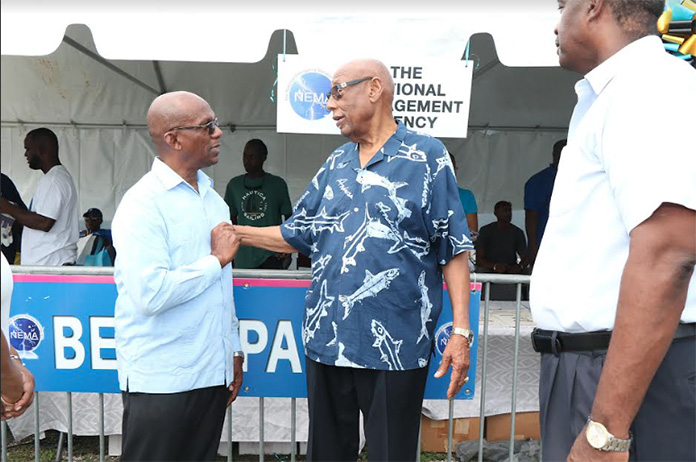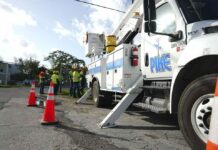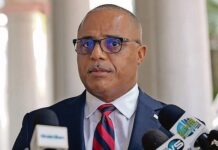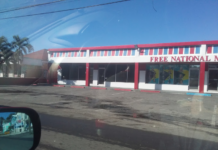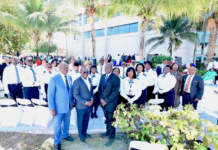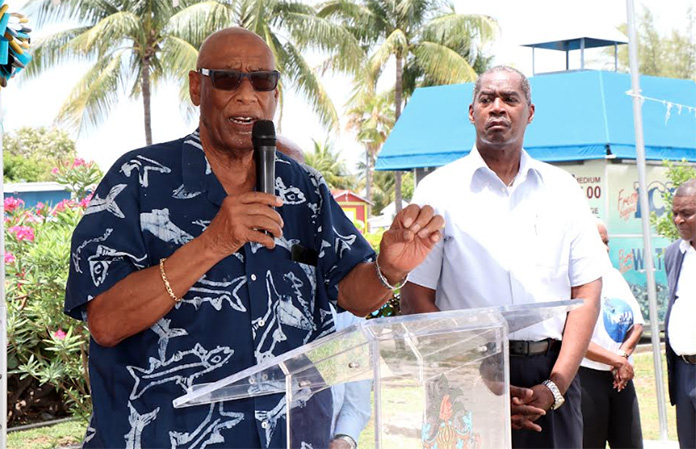
NASSAU, The Bahamas – The 2023 Atlantic Hurricane Season got off to a quick start on the opening day of the season, Thursday, June 1, with the formation of Tropical Depression No. 2 in the Gulf of Mexico. It later developed into the first named storm of the season — Tropical Storm Arlene — on Friday, June 2.
TS Arlene disintegrated into a Tropical Depression on Saturday, June 3, before dissipating on Sunday (June 4).
Disaster Risk Managers and officials at the Bahamas Department of Meteorology, said the quick start to the 2023 Atlantic Hurricane Season, should be a reminder to Bahamians everywhere, who haven’t already completed their hurricane preparations, to get the process completed without any further delay. This should include completing Hurricane/Disaster Supply Kits and Emergency Plans. Those who have completed their preparations, officials say, should continue to remain vigilant.
“It is important that we remain in a state of readiness at all times during the Hurricane Season. Do not wait until the last minute,” Mr. Jeffrey Simmons, the Acting-Director of the Bahamas Department of Meteorology warned.
“The quick start to the 2023 Atlantic Hurricane Season shows the importance, the need, to be prepared. By now, everyone should have already completed their checks around their homes and properties; they should have completed their Emergency Supplies Kits and formulated their Emergency Plans so that if The Bahamas Department of Meteorology begin to issue Alerts, Watches and Warning, they would already be in a state of readiness.”
Permanent Secretary in the Office of the Prime Minister’s Disaster Management Unit, Mr. Carl Smith, said Disaster Risk Managers and Planners across the archipelago have been doing, and will continue to do their part to ensure a state of readiness. This included the recent observance of Disaster Preparedness Month in May that concluded with an Exhibition at Arawak Cay and during which Governor-General, His Excellency, the Most Hon. Cornelius A. Sith, O.N., delivered the Opening Address and toured the more than 30 booths on display.
Mr. Smith said the plan is to ensure that climate change and disaster mitigation are integrated into the national solution in order to reduce risk, loss of life, health, damage to the environment and property, and the economic disruption that can occur as a result of disasters. He said individuals, families and communities, have a role to play in disaster preparedness as well.
“Disaster can strike at any time,” Permanent Secretary Smith said. “Be ready for hurricane season. Take action TODAY to be better prepared. Understand your risks from hurricanes, and begin preparations now. Make sure you understand how to interpret forecasts and alerts, and know what to do before, during, and after a storm. We need to make ourselves ready to the best of our individual and collective abilities.”
Mr. Smith said Disaster Risk Managers and Planners at the National Emergency Management Agency (NEMA) have been actively engaged in hurricane and disaster preparation. He said NEMA is making a concerted effort in collaboration with all other key stakeholders in government, the private sector (and externally where necessary), to have all critical systems in place and functioning effectively on each island, including hurricane shelters, adequate supplies and reliable telecommunications and power supply.
“But this is not just about NEMA or about the Government more widely. It is also a task for us as individuals and as members of families and communities to prepare and protect ourselves and our properties as best we can. We all have a part to play. I therefore take this opportunity to encourage you to take whatever serious and urgent precautions that are necessary to ensure that this hurricane season does not find you in what would be an unfortunate and extremely risky state of unpreparedness and vulnerability. I stress this again because of the importance of preparedness in disaster mitigation.
“Be proactive in preparing for severe weather. Create emergency plans for your families. Replenish your stock of emergency supplies, and take the necessary measures to protect property and possessions. Additionally, remain attentive to all advisories and warnings issued by The Bahamas Department of Meteorology. The impact of our collective preparation efforts increase our capacity to quickly recover in the aftermath of a storm. We must not allow ourselves to become desensitized to risk or complacent in our planning.”
Mr. Smith said persons/families/communities may need to survive on their own for several days until First Responders can reach them in the aftermath of an emergency or disaster.
“Being prepared means you have enough food, water, and other supplies to last for at least 72 hours. That’s why it’s extremely important to have a 72-hour emergency kit,” he said.
Mr. Smith said hurricane/disaster supplies kits should include the following:
“Water — one gallon of water per person, per day, for at least three days, and to be used for drinking and sanitation needs; non-perishable food — at least a three-day supply of non-perishable food. The Emergency Supply Kit should also include a manual can opener, battery-operated radio, prescription and non-prescription medicines, flashlight, first aid kit, small amounts of cash, hygiene items, extra batteries, whistle to signal for help, an extra set of clothing, multi-purpose tool, emergency blanket, important documents — for example, copies of insurance policies, emergency contacts, and ID cards which should be kept in a water-proof bag.”
Permanent Secretary Smith said the needs of children, the elderly, and persons with disabilities should be given priority.
“For instance, supplies such as eyeglasses, infant formula, diapers, wipes, children’s books, toys, games and puzzles, writing paper and pencils, in addition to prescription and non-prescription medicines and any assistive devices that the elderly or persons with disabilities may need. Being well prepared can save lives,” Mr. Smith added.
